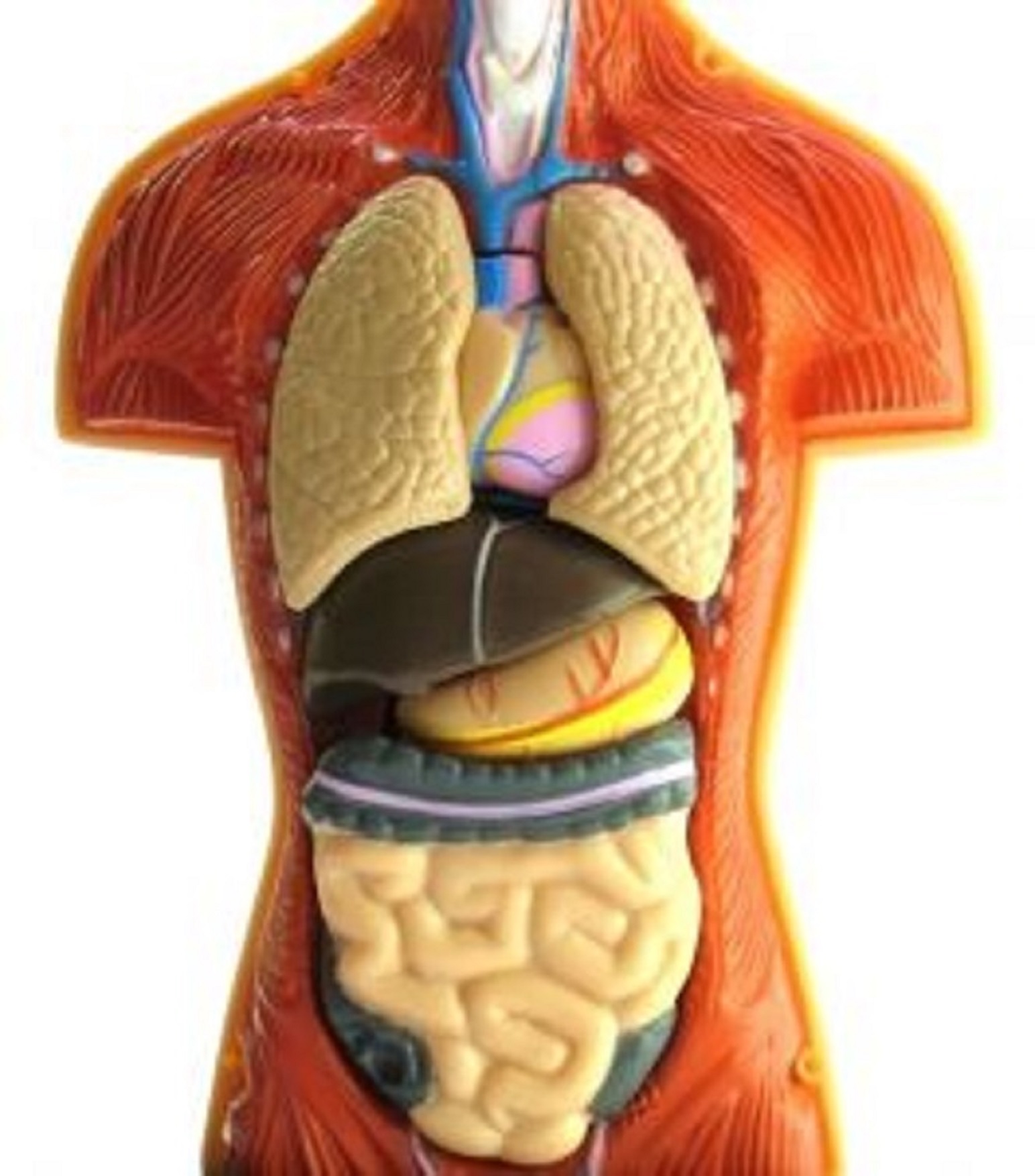What is Gilberts Disease?
A health article about Gilberts disease from Your Health Online the A to Z directory of dealing with Health Problems & nutritional Self Care Strategies

There are quite a number of population that had been affected since their time of birth by this condition, Gilbert's disease affects about two to five percent of the population in the United States alone.
To better understand what it is and how it affects the people ridden with the condition, here are some of the frequently asked questions about Gilbert's disease.
This inherited condition (hereditary) affects just about two to five per cent of the population.
Gilbert's disease affects up to 10% of some Caucasian populations this means that for every one hundred people ten of them suffer from the disease.
Gilbert's disease is known to be one of the causes of mild jaundice once in a while. It is typically not dangerous and has no need for treatment.
It is due to a condensed amount of a compounds in the liver, which processes a breakdown result of blood cells called bilirubin.
Gilbert's disease is a condition wherein the liver has a problem in breaking down the bilirubin completely.
What is bilirubin and what happens to a person with Gilbert's disease?
Bilirubin is continuously made inside our bodies, it is a form of end product.
It is the waste product of hemoglobin. Hemoglobin is a compound that is found in every person's red blood cells and it is responsible for carrying oxygen to the other cells in the body.
Many of the red blood cells that we have and the hemoglobin break down each day and as a result bilirubin needs constant disposal.
Bilirubin gets carried to the bloodstream and into the liver where it is taken in by liver cells.
The liver breaks down the bilirubin further into the gut and to bile.
An enzyme or a chemical compound that can be found in liver cells called urodine diphosphate glucuronosyltransferase (UGT) aides the liver cells to break down the bilirubin.
People with Gilbert's syndrome have a reduced level of UGT and so bilirubin can build up in the bloodstream. High levels of bilirubin in the blood causes jaundice.
Where did the name Gilbert's disease came from?
In 1901, a French gastroenterologist named Augustin Nicolas Gilbert and his co-workers described the differences in the symptoms of Gilbert's disease and the other liver diseases.
He also provided additional information on how to acquire it and it's further transmission.
Some of the Common Symptoms of Gilbert's Disease

Hereditary diseases like Gilbert's disease are one of those that we can acquire and not know about for a long time.
One of the reasons why we can live without knowing the presence of Gilbert's disease is that the condition itself has no symptom or noticeable effect.
Some people can even live through the rest of their lives without even knowing.
Unfortunately, the specific symptoms related to Gilbert's disease is not as easy to spot and monitor like in other diseases.
Gilbert's disease can be very dormant in terms of symptoms that it can manifest in a person for several years with them knowing it.
Despite other distinctive results related to Gilbert's disease include jaundice, nausea, exhaustion, instability, bowel complaints, queasiness and vomiting, and difficulty concentrating.
Investigations associated with the condition include: full blood count proves usual reticulocyte count - to differentiate from haemolysis; a climb in bilirubin on fasting or after IV nicotinic acid can corroborate the conclusion; additional liver function tests (as well as lactate dehydrogenase) and liver biopsy are regular, but the latter should hardly ever be required clinically; and absence of bilirubin and abnormally low amounts of urobilinogen in the urine.
Types of Gilbert's disease

In the field of medicine, Gildbert's disease comes in many names.
Some of which in include "Icterus intermittens juvenilis," "low-grade chronic hyperbilirubinemia," "familial non-hemolytic-non-obstructive jaundice," "constitutional liver dysfunctions," "unconjugated benign bilirubinemia" among others.
Although the names of the condition vary, they are all believed to have the same effect and symptoms as Gilbert's disease.
How different is it from jaundice?
Jaundice is caused by the excessive levels of bilirubin in the body, more specifically the blood.
Because people with Gilbert's disease have fluctuating levels of UGT or urodine diphosphate glucuronosyltransferase, the build up and the manifestation of Jaundice can't really be used to gauge the severity of a person with Gilbert's disease's condition.
Aside from the discomfort and stomach pains most of the other signs of having Gilbert's disease can be associated with other conditions.
What Causes Gilbert's disease

The only clear indication that a person has Gilbert's disease is if they have experienced jaundice.
With only minor stomach pains and yellowish skin and eyes, Gilbert's disease causes no great concern to some people.
Other symptoms connected to the condition is uncommon
The person suffering jaundice because of Gilbert's disease does not usually cause any major problems, Jaundice is the condition where a person suffers from yellowish skin and eyes and a little stomach pain.
However, a number of people with Gilbert's disease account other symptoms, the majority of these symptoms are: tiredness, mild weakness, mild abdominal pains and mild nausea.
It is not apparent whether these symptoms are in fact connected to Gilbert's disease.
It is likely that they will build up from time to time due to unsupported nervousness concerning the condition.
There does not appear to be any association amid these symptoms and the level of bilirubin in the blood.
That is, these symptoms may develop irrelevant to whether or not the level of bilirubin is high or normal.
If the height of bilirubin goes higher than a definite level you turn out to be jaundiced. This is because bilirubin is an orangey-yellow color.
A few people with Gilbert's disease grow to be a little jaundiced now and then.
This might appear to be upsetting, but is of little alarm if the cause is Gilbert's disease. It is quite common to be jaundiced if you are a patient of Gilbert's disease.
More on the process of breaking down the bilirubin
Jaundice—a condition brought about by high levels of bilirubin in the blood stream.
For people suffering from Gilbert's disease it is caused by the inability of the liver to produce an enzyme that breaks down the bilirubin in the blood and to transfer it to the gut in the form of bile—can be caused by a lot of different diseases of the liver and blood.
As a result, if you contract jaundice you are expected to call for tests to make clear the reason and to discard the chance of a serious disease.
A blood test can more often than not confirms the diagnosis of Gilbert's disease as it demonstrates a mildly raised level of bilirubin and confirms the non-existence of a serious disease.
Gilbert's disease was first described by a French gastroenterologist names Augustin Nicolas Gilbert in 1901. Gilbert's disease is an asymptomatic (no external symptoms) condition affecting the liver.
The condition affect an enzyme in the body called urodine diphosphate glucuronosyltransferase or UGT (abbreviation).
UGT aids the liver in breaking down bilirubin which is found also in the blood stream.
Bilirubin is the waste product of the hemoglobin in the blood. Hemoglobin is found in the red blood cells that carry oxygen to other cells in the body to complete the cycle of respiration.
After the red blood cells successfully brought the oxygen to the other parts of the body, the blood produces bilirubin.
The liver cells then collect all the bilirubin produced by the blood, transfer it to the liver to be broken down into the gut, and turned to bile.
This is where UGT or urodine diphosphate glucuronosyltransferase comes in, it helps the liver cells process the bilirubin in to bile.
Gilbert's disease affects the production of UGT, this is because it fluctuates the production of UGT in the body.
The fluctuating levels of UGT greatly affect the levels of bilirubin retained in the blood.
Bilirubin is orangey- yellow in color, which in turn causes a patient to have jaundiced skin.
Risk Factors: Who Are Prone to Gilberts Disease?

Gilberts syndrome is a very common hereditary condition that means there is no way to prevent or to treat the condition was it has been passed on to the next generation.
About 1 in 20 people have this syndrome - but most will not be aware of it.
It is more common in men than women.
It is often first diagnosed in the late teens or early twenties.
1. Genetics.
The reason for the body contacting high bilirubin levels is because of the fluctuating levels of UGT or urodine diphosphate glucuronosyltransferase in the liver and the blood stream.
UGT is an enzyme that aids the liver in breaking down bilirubin. Bilirubin is the waste product of the hemoglobin in the blood. Hemoglobin is used to carry oxygen in our bloodstream.
- Hepatic glucuronidation (essential for conjugating bilirubin) is concentrated to minimal levels to around 30 percent of standard; and -
In addition to their reduced Bilirubin-UGT enzyme activity, most patients with Gilbert's syndrome may have irregularities in the glucuronidation of aspirin or derivatives of coumarin and dopamine.
2. Presentation.
It can stay overlooked for many years, but more often than not makes its manifestation in adolescence with:
- Irregular jaundice noticed after fasting, being short of of sleep, hearty exercise or during an intercurrent sickness. - Contacting certain medications may aid in the manifestation of jaundice e.g. chemotherapy.
Unfavorable effects of anticancer agents have been observed in Gilbert's patients owing to reduced drug or bilirubin glucuronidation.
Exclusion of Other Conditions

While this syndrome Gilberts disease is considered to be harmless by itself, it is clinically important to be diagnosed and identified correctly because it may be confused with much more dangerous liver conditions.
However, these will show other indicators of liver dysfunction:
- Hemolysis can be excluded by a full blood count, haptoglobin, lactate dehydrogenase levels and the absence of reticulocytosis (elevated reticulocytes in the blood would usually be observed in haemolytic anaemia);
- Hepatitis can be excluded by negative blood samples for antigens specific to the different hepatitis vira;
- Cholestasis can be excluded by the absence of lactate dehydrogenase, low levels of conjugated bilirubin and ultrasound scan of the bile ducts;
- More severe types of glucoronyl transferase disorders like Crigler-Najjar syndrome (types I and II). These are much more severe and cause brain damage in infancy (type I) and teenage years (type II);
Other diseases of the liver can be exluded by the liver-enzymes ALAT, ASAT and albumin being within normal ranges.
When To Seek Medical Attention For Gilbert's Disease

Patients with Gilbert's disease show predominantly elevated unconjugated bilirubin.
While conjugated is usually within normal ranges and form less than 20 percent of the total.
The level of total bilirubin is often increased if the blood sample is taken after fasting for two days, and a fast can therefore be useful diagnostically.
If the total bilirubin does in fact increase while fasting, the patient can then be given low doses of phenobarbital when fasting has ended, and following samples should show a decrease in total bilirubin toward normal levels.
Once the findings have been reported, the patient with Gilbert's disease should be more careful and should follow what the physician says.
It will also be helpful for him or her to conduct a research so he or she can take care of themselves at home or if they cannot go to the doctor regularly.
It is also best to watch diet carefully, conduct regular exercise, and take necessary medications or undergo treatments when needed.
Treatment/Therapy:

The good news for people with Gilbert's disease is that they really don't have much to worry about since the damage done by Gilbert's disease is almost non threatening.
No healing is required and life expectation is normal.
Bear in mind also that not all the people who are affected by Gilbert's disease show signs and symptoms at all.
Although asymptomatic Gilbert's disease all the way through one's life is very exceptional, there can positively be periods of time a patient has no external signs of the disease.
Absolutely no treatment is required for the condition.
Patients with Gilbert's disease can normally lead healthy lives.
Their life expectancy is not really affected.
Mild jaundice may recur from time to time for short periods, but usually causes no health problems.
Self Care strategies for Living with Gilberts disease

Here is a short list of the ways and the steps to go through to systematically to find out if you have Gilbert's disease.
Step number 1: If you have an inkling that you have Gilbert's disease and you also found out that your family has a history of having it too, you should immediately look for the signs and symptoms of the diseases.
One of the symptoms you have to look for is the symptom of jaundice.
Those signs are yellowish skin and yellowish eyeballs, it may also be accompanied by swollen mucus membranes and running nose.
Another symptom is fatigue due to physical stress (exercise, general stress, and illness). Other symptoms to look for include nausea, general sleepiness or tiredness, pain in the body.
Step number 2: Visit your family doctor and tell him about the symptoms and the signs that you are experiencing. You should also tell your doctor about your suspicion and your family history.
This may narrow down the search for the condition you are experiencing. Telling your doctor your suspicions may help out a lot.
Step number 3: Besides testing the physical symptoms, your doctor will let you go through an indirect bilirubin blood test that will say whether the disease is at hand.
Step number 4: Once diagnosed, though there isn't a treatment for the condition your doctor can still treat the jaundice and the help relieve the pain or discomfort associated with the abdominal symptoms of Gilbert's disease that can be present.
Support groups.
Many of our relatives and friends who are sick are need of people around them that can make them feel that everything is going to be all right. It is what we call a support group.
A support group can have members who are also afflicted by the disease, family members, doctors and other people that can give kind words and supportive comments to people who feel like it is the end of the world for them.
Connecting Liver Disease and Gilbert's Disease:

The human liver is one of the most important organs of the body.
It is responsible for cleaning our internal organs of the entire gunk and bile that is deposited by a person on a regular basis.
But conditions like Gilberts disease and other forms of liver disease makes our livers weak and prone to breaking down.
To understand better how the liver is affected by different kinds of diseases and the impact of these conditions to our body.
Liver disease is a general term used in describing any kind of sickness affecting the liver.
Many of theses conditions are accompanied by jaundice caused by the heightened levels of bilirubin in the system.
The bilirubin is the product of the breakup of the hemoglobin of dead red blood cells; usually, the liver takes away bilirubin from the blood and excretes it through bile.
The following are some of the known conditions that are considered as liver diseases:
- Hepatitis.
This is the inflammation of the liver. This caused mainly by different kinds of viruses, there are also times that it is caused by some poisons, even hereditary conditions.
- Cirrhosis.
This is the formation of fibrous tissue in the liver, the fibrous tissue takes the place of dead liver cells.
- Haemochromatosis.
This is a hereditary disease caused by too much iron in the body causing liver damage.
- Cancer of the liver.
This is usually coming from other parts of the body that is also affected by cancer. Usually, when cancer cells metastasis, it reaches the liver and it starts spreading from there.
- Wilson's disease.
This condition is hereditary and copper deposits in the body cause it.
- Budd-Chiari syndrome.
This is caused by the obstruction of the person's hepatic vein.
- Gilbert's syndrome.
This is a genetic disorder of bilirubin metabolism, found in about 5 percent of the population.
- Glycogen storage disease type II.
Here, the build-up of glycogen causes progressive tissue weakness (myopathy) throughout the body and affects various body tissues, particularly in the heart, skeletal muscles, liver and nervous system.
There are also many pediatric liver diseases, including biliary atresia, alpha-1 antitrypsin deficiency, alagille syndrome, and progressive familial intrahepatic cholestasis, to name but a few.
A number of liver function tests are available to test the proper function of the liver.
These test for the presence of enzymes in blood that are normally most abundant in liver tissue, metabolites or products.
Symptoms of a diseased liver
There are a few external signs that we could include to determine a diseased liver, some of those external signs are a coated tongue, bad breath, skin rashes, itchy skin, excessive sweating, offensive body odor, dark circles under the eyes, red swollen and itchy eyes, acne rosacea, brownish spots and blemishes on the skin, flushed facial appearance or excessive facial blood vessels.
There are other symptoms to look out for and they include jaundice, dark urine, pale stool, bone loss, easy bleeding, itching, small, spider-like blood vessels visible in the skin, enlarged spleen, fluid in the abdominal cavity, chills, pain from the biliary tract or pancrea, and an enlarged gallbladder.
The improper digestion and absorption of fats may lead to symptoms that include indigestion, reflux, hemorrhoids, gall stones, intolerance to fatty foods, intolerance to alcohol, nausea and vomiting attacks, abdominal bloating, and constipation.
Unfortunately, some liver diseases like Gilberts disease are known to share symptoms with other liver diseases. So it's better to consult a professional.
Vitamin & Nutrient Associations
Even when we try to eat well, we're disadvantaged. The nutritional
content of most food has been compromised over the years, not only by
deficient soils and modern production, transportation, storage and
processing methods, but also by the enormous amounts of chemical and
artificial substances added to promote growth, storage life, taste and
appearance.
It's for this reason that more and more medical authorities are
advocating the use of vitamin and mineral supplements. However, finding
them in the right combination can be both confusing and costly.
The nutrition products I am going to recommend you make use of knowledge
gained from the botanical world's 6,000 year history. They incorporated
health building nutritional herbs with the best modern technology to
help our bodies cleanse and detoxify so that the cells - the tiniest
living units - can be as fully nourished as possible.
This allows the cells to grow,
repair and to perform their functions with the best possible efficiency
so that we feel and look better and are more able to prevent and fight
disease. Once the body begins to clear itself of toxins it can more
efficiently absorb nutrition.
Further reading through our articles on health issues will give
you a body of information that will help you decide what options you
have to deal with the underlying causes of your problem through giving
your body the nutrition products that will assist you body to heal from
the inside out.
You can visit our health food products page here: Herbalife Health Nutrition Supplements and learn more about our core nutrition program, the Cellular Nutrition Advanced Program and also check out these targeted products, Florafiber to replace your healthy flora and Aloe Vera Juice to help cleanse your system.
Also using NouriFusion Skin Essentials will clearly help provide you with excellent skincare support for your ‘outer nutrition’.
We wish you well in your search for solutions to this problem and your movement towards better health in all areas.

More Resources available about Gilberts disease
Below here are examples of Health Success
Results other people have had with using a self care strategy for
dealing with this condition:
We would be very interested to hear your result stories with your problem if you are using some of our nutrition products. To send us your story just fill out the form below.
Share *YOUR* remedy & health success story!
We are on a world-wide mission to source and tell our readers about as many as possible of the natural remedies & self care strategies available, so please help us to grow and improve our health information on this subject.
If you have a proven home remedy or natural treatment or have a great Health Success story, we would love to share it with our readers.
And as a special "Thank You" for your contribution, we will give you our special edition "Health Success Report"!
(When you submit this article you agree to the ***GENERAL RELEASE below this form)

*** GENERAL RELEASE AND ASSIGNMENT
For good and valuable consideration, the receipt
and legal sufficiency of which is hereby acknowledged, I ("I", "me",
"my") hereby agree as follows:
1) I hereby grant to Warren Tattersall, his successors, assignees and
licensees the unlimited right, but not the
obligation, to use any statements made by or attributed to me (my
"Statements") as well as my name, voice, and likeness, performance,
personal characteristics and other identifying information (jointly and
severally with the Statements and the photographs referenced in
Paragraph 2 below, my "Personal Characteristics") in and in connection
with the advertising, promotion, marketing and other exploitation of
Herbalife products or Warren Tattersall’s services in any and all
languages and media, now known or hereafter devised, throughout the
universe in perpetuity.
2) If I supply Warren Tattersall with photographs of myself on this date
or any date subsequent, I agree that Warren Tattersall may use such
photographs to the full extent provided above, I warrant and represent
that I am the person depicted in the photograph, I am the owner of the
photograph, I have the authority to grant the permission and rights
granted herein, and no one else’s permission is required to grant such
rights, and I understand that the copy of the photograph(s) I supply to
Warren Tattersall will not be returned.
3) I understand that Warren Tattersall is not obligated to use my
Personal Characteristics as permitted herein or, if commenced, to
continue with such use in any territory. I acknowledge and agree that
Warren Tattersall may make my Personal Characteristics available to
Warren Tattersall’s independent distributors to use as permitted above.
4) In undertaking the act of submitting my words and images through
www.TheHealthSuccessSite.com I understand that I am agreeing the terms
and conditions of this agreement
I have read this entire General Release and Assignment and fully
understand his contents. I likewise understand that this document shall
remain in full force and effect unless/until I request that it be
terminated, and that any such request must be made in a signed writing.
By signing below, I hereby acknowledge and agree to the
foregoing.
I understand that in submitting my material for publication I am granting the rights to reproduce this material on the internet or in other form and I have read the conditions above
BACK TO “Your Health Online”
the A to Z directory of dealing with Health Problems & Self Care Strategies for natural remedies to your health issues.
Terms of Use | Privacy Policy | Disclaimer | Site Map
====================================================
SITE DISCLAIMER: Do these products “cure” anything? Of course
not… but it stands to reason that if you cleanse your body and feed it
the finest nutrition available, giving it everything it needs in
balance, on a daily basis, that your body will do what nature intended,
and give you the best possible chance to fend off sickness and disease.
This Gilbert's disease information is not presented
by a medical practitioner and is for educational and informational
purposes only. The Gilbert's disease content is not
intended to be a substitute for professional medical advice, diagnosis,
or treatment. Always seek the advice of your physician or other
qualified health provider with any Gilberts disease
questions you may have regarding a medical condition. Never disregard
professional medical advice or delay in seeking it because of something
you have read.
The Gilberts disease resources on this site are not intended to be a substitute for professional advice. While all attempts have been made to verify Gilberts disease information provided in this publication, neither the author nor the publisher assumes any responsibility for errors, omissions or contrary interpretation of the web site Gilberts disease subject matter herein.
The site Gilberts disease contents are solely the opinion of the authors and should not be considered as a form of advice, direction and/or recommendation of any kind. If expert advice or counseling is needed, services of a competent professional should be sought. The author and the Publisher assume no responsibility or liability and specifically disclaim any warranty, express or implied for any Gilberts disease products or services mentioned, or any techniques or Gilberts disease practices described.
The purchaser or reader of this Gilberts disease publication assumes responsibility for the use of these materials and information. Neither the author nor the Publisher assumes any responsibility or liability whatsoever on the behalf of any purchaser or reader of these Gilberts disease nutritional supplements materials. There is no guarantee of validity of accuracy. Any perceived slight of specific people or organizations is unintentional.
This website and its
creators are not responsible for the content of any sites linked to.
Since natural and/or dietary supplements are not FDA approved they must
be accompanied by a two-part disclaimer on the product label: that the
statement has not been evaluated by FDA and that the product is not
intended to "diagnose, treat, cure or prevent any disease."
====================================================
the A to Z directory of dealing with Health Problems & Self Care Strategies for natural remedies to your health issues.

Subscribe to get your weekly "Health Success Magazine" with a new complete & comprehensive Health Report in every edition!

to “Your Health Success”
our weekly F’R’E’E’ Newsletter
If you would like a free no-obligation private consultation or to contact Warren Tattersall for more information, please click here >> Contact Us


To contact Warren Tattersall for more information, please click here >> Contact Us



